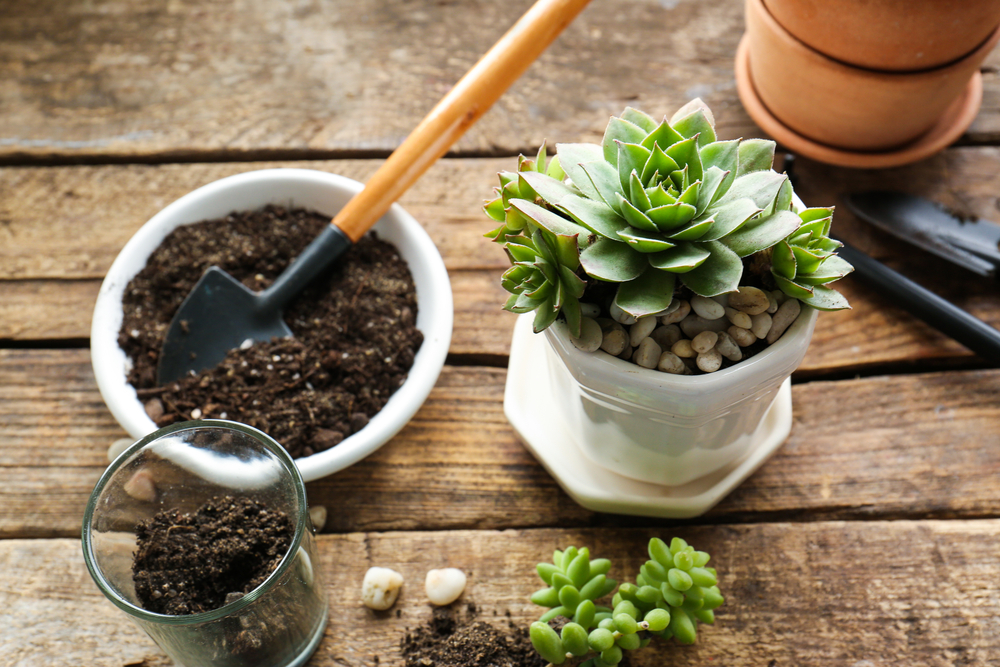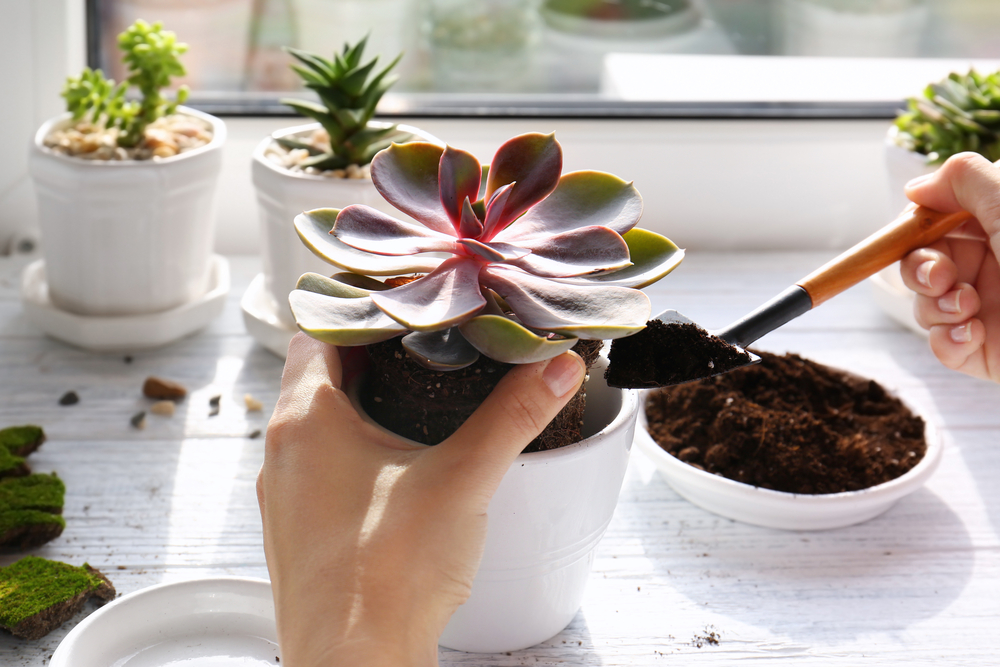AD | Affiliate Links
Succulent new plants have fleshy leaves, stems, and roots for storing water to survive conditions that are too dry for most plants. Most succulent types are sometimes able to survive without much water. They can survive on moisture only from dews, mists, and fogs.
Contents
Types of succulents
Succulent comes from the Latin word “succos,” which means juice or sap. Succulent species from over 60 families and 300 genera are called succulents, and they fall into the following categories:
- Leaf succulents are almost entirely composed of water storage cells in the succulent leaves. A thin layer of photosynthetic tissue covers these cells. Aloe, haworthia, lithops, and sempervivum are examples.
- Stem succulents have their water storage cells in their fleshy stems. The near absence of leaves in these plants reduces the loss of water by evaporation by reducing the surface area. Euphorbia obesa, stapelia, and most cacti are stem succulents.
- Root succulents store water away from the sun, underground. During a prolonged dry season, these plants may shed leaves and stem. Examples are Calibanus hookeri, Fockea edulis, Pterocactus kunzei, and Peniocereus striatus.
- Some succulents, like Ceraria pygmaea, Tylecodon paniculata, and Cyphostemma juttaeare, are combinations of these types, using more than one organ to store excess water.

Watering For Succulent Growth
Your beautiful succulents may look healthy and show new growth, but in soil type that is too wet, the roots may begin to rot. When the damage is so great that there is not sufficient root structure available to take up water, the plant will look to be underwatered. This will only make the condition worse. Once the body of the plant gets soft and discolored, it usually can’t be saved.
During the summer, water your succulent about once a week, letting the soil dry completely in between. If you are following the basic watering plan and your plant is not thriving, take it out of its pot immediately and examine the roots. Cut away any dead, brown, or rotted material, and repot in fresh, drier soil.
Watering any variety of succulents more than once a month while it is dormant in the winter months can also cause root system rot even for the fastest growing succulents.
If the succulent is under watered, dieback, or self-pruning of stems and branches, may occur. Stress pigments may make a cactus take on a reddish or purple cast. If your plant has been under watered, start reversing the effects by slowly starting to water. Some of the roots may have died off during the drought, making it hard for the plant to absorb water, and more water than the damaged roots can absorb can cause rot.
Lighting For Faster Growth Of New Succulents
Succulents prefer bright light, and many will grow outdoors during the summer. Watch for scorching conditions on the green leaves and move the plant if necessary.
Stunted leaves, pale or yellow, mean the succulent is not receiving enough light. There may be long spaces between leaf joints, and the stems will be thin. Move the plant to a better light and prune it to restore its shape.
Some succulents can be kept dormant in the winter in a dark, cool, and absolutely dry environment without showing bad effects.

Scorch And Heat Damage
Sunken brown or white patches developing on the succulent mean heat damage of high temperatures. The green chlorophyll is destroyed and the tissue is overheated. Intense heat can cause damage, even if the plant is not in direct sunlight.
Harden your succulent after a shady period by gradually exposing it to sunlight to prevent scorching.
Cold Damage
Succulents are cold-hardy fleshy plants but shouldn’t be exposed to temperatures below 40 degrees F unless dormant. For the best results, keep daytime temperatures between 70 degrees and about 85 degrees, and between 50 degrees and 55 degrees at night.
Fungal attacks on the soft tissue at the growing points will kill the plant. Unsightly brown spots can also occur if the plant is exposed to the cold.
Growing Medium For Fast Growing Succulents
Succulents need fast-draining soil to thrive. A mixture that’s at least half sand or clean gravel is best. When grown in containers, succulent plants usually have shallow roots that form a dense, shallow mat just under the surface.
Fertiliser, Good Soil And Ideal Conditions For Succulent Gardening
Don’t fertilise your succulent during the winter. While the plant is growing during the summer, follow the same schedule as you do for your other houseplants.

How To Fertilise The Varieties Of Succulents
Succulents are classified as plants that have thick and fleshy leaves or stem. A variety of plants belonging to the succulent group, including cacti and jade.
Succulents are easy plants to care for, as they do not need much watering and little to no pruning. They do benefit; however, from the addition of organic fertiliser. Fertiliser feeds your succulents the nutrients they require, such as nitrogen, phosphorus, and potassium. Giving your succulents too much fertiliser is potentially harmful; therefore, you must take care when feeding your exotic-looking plant.
Look at the back of the fertiliser for information on how much to feed your succulent; it will depend on the size of the plant. Succulents typically require about half of the amount that is recommended.
Sprinkle the appropriate amount of fertiliser for your sized succulent on the well-drained soil, if you are using the powdered variety. Most fertiliser is placed on top of the succulent soil around the mature plants beginning at the roots and out to the edge of the container. If you are using a liquid fertiliser, pour the liquid into the succulent’s soil just as if you were watering it.
Perform this technique during the succulent growing season, which typically occurs in late spring or early summer. Succulents require fertilizer applications only about once or twice a year.
Tips & Warnings For Your Fast-Growing Succulent Plant
Succulents require very little water and minimal care. Although it varies depending on the plant, succulents typically need water once a week during warm weather and once a month during the cold. A lot of water can cause root rot.
Use A Fertiliser That Is Higher In Phosphorus Than Nitrogen
Many succulents grow well and bloom indoors when placed on a windowsill; however, they often benefit from spending time outdoors during the summer months. Start the transition from indoors to out by placing them in a semi-shaded area, and then gradually moving them to an area that has plenty of sunlight.
Keep the plants in warm temperatures for fast growth, but a good idea is to prevent them from experiencing the intense sun that usually occurs between 11 a.m. and 3 p.m. — move them into the shade during this part of the day to increase the growth rate.













